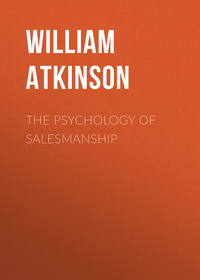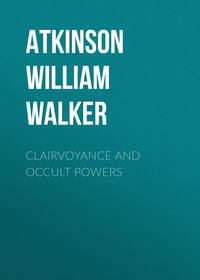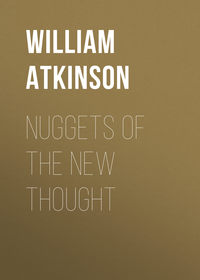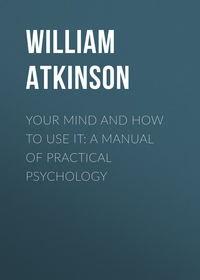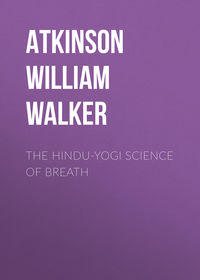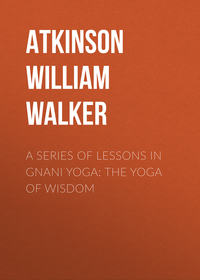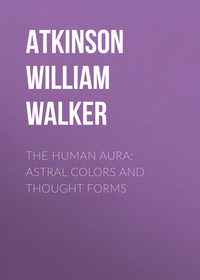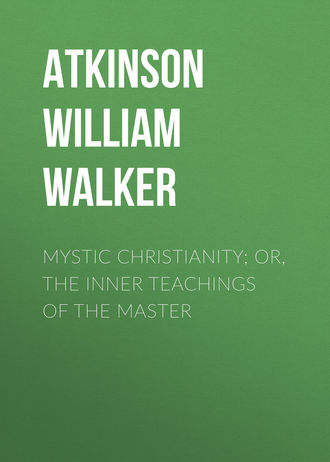 полная версия
полная версияMystic Christianity; Or, The Inner Teachings of the Master
But, not so with the people who flocked to the ranks of Christianity toward the close of the first century—coming from pagan people, and bringing with them their pagan legends and doctrines. These people believed that the Body was the Real Man, and consequently attached the greatest importance to it. These people were almost materialists as the result of their pagan views of life. They began to exert an influence on the small body of original Christians, and soon the original teachings were smothered by the weight of the pagan doctrines. For instance, they failed to grasp the beautiful ideas of Immortality held by the original Christians, which held that the soul survived the death and disintegration of the body. They could not grasp this transcendental truth—they did not know what was meant by the term "the soul," and so they substituted their pagan doctrine of the resurrection of the physical body. They believed that at some future time there would come a great Day, in which the Dead would arise from their graves, and become again alive. The crudeness of this idea, when compared to the beautiful doctrine of the Immortality of the Soul of the original Christians, and by the advanced Christians to-day, is quite painful. And yet these pagan converts actually smothered out the true teachings by their crude doctrine of resurrection of the body.
These people could not understand how a man could live without his physical body, and to them future life meant a resurrection of their dead bodies which would again become alive. To them the dead bodies would remain dead, until the Great Day, when they would be made alive again. There is no teaching among these people regarding the soul which passes out of the body and lives again on higher planes. No, nothing of this kind was known to these people—they were incapable of such high ideas and ideals—they were materialists and were wedded to their beloved animal bodies, and believed that their dead bodies would in some miraculous way be made alive again at some time in the future, when they would again live on earth.
In view of modern knowledge regarding the nature of matter, and the fact that what is one person's body to-day, may be a part of another's to-morrow—that matter is constantly being converted and reconverted—that the universal material is used to form bodies of animals, plants, men, or else dwell in chemical gases, or combinations in inorganic things—in view of these accepted truths the "resurrection of the body" seems a pitiful invention of the minds of a primitive and ignorant people, and not a high spiritual teaching. In fact, there may be many of you who would doubt that the Christians of that day so taught, were it not for the undisputed historical records, and the remnant of the doctrine itself embalmed in the "Apostle's Creed," in the passage "I believe in the resurrection of the body" which is read in the Churches daily, but which doctrine is scarcely ever taught in these days, and is believed in by but few Christians—in fact, is ignored or even denied by the majority.
Dr. James Beattie has written, "Though mankind have at all times had a persuasion of the immortality of the soul, the resurrection of the body was a doctrine peculiar to early Christianity." S.T. Coleridge has written, "Some of the most influential of the early Christian writers were materialists, holding the soul to be material—corporeal. It appears that in those days some few held the soul to be incorporeal, according to the views of Plato and others, but that the orthodox Christian divines looked upon this as an impious, unscriptural opinion. Justin Martyr argued against the Platonic nature of the soul. And even some latter-day writers have not hesitated to express their views on the subject, agreeing with the earlier orthodox brethren. For instance, Dr. R.S. Candlish has said,
"You live again in the body,—in the very body, as to all essential properties, and to all practical intents and purposes, in which you live now. I am not to live as a ghost, a spectre, a spirit, I am to live then as I live now, in the body."
The reason that the early Church laid so much stress on this doctrine of the Resurrection of the Body, was because an inner sect, the Gnostics, held to the contrary, and the partisan spirit of the majority swung them to the other extreme, until they utterly denied any other idea, and insisted upon the resurrection and re-vitalizing of the physical body. But, in spite of the official fostering of this crude theory, it gradually sank into actual insignificance, although its shadow still persists in creed and word. Its spirit has retreated and passed away before the advancing idea of the Immortality of the Soul which returned again and again to Christianity until it won the victory. And as Prof. Nathaniel Schmidt has said, in his article on the subject in a leading encyclopaedia, "… The doctrine of the natural immortality of the human soul became so important a part of Christian thought that the resurrection naturally lost its vital significance, and it has practically held no place in the great systems of philosophy elaborated by the Christian thinkers in modern times." And, yet, the Church continues to repeat the now meaningless words, "I believe in the Resurrection of the Body." And while practically no one now believes it, still the recital of the words, and the statement of one's belief in them, forms a necessary requisite for admission into the Christian Church to-day. Such is the persistent hold of dead forms, and thoughts, upon living people.
And, so you can readily see from what has been said, why the early Christians, about the close of the first century A.D., attached so much importance to the physical conception and birth of Jesus. To them the physical body of Jesus was Jesus Himself. The rest follows naturally, including the Virgin Birth and the Physical Resurrection. We trust that you now understand this part of the subject.
We have heard devout Christians shocked at the idea that Jesus was born of a human father and mother, in the natural way of the race. They seemed to think that it savored of impurity. Such a notion is the result of a perverted idea of the sacredness of natural functions—a seeing of impurity—where all is pure. What a perversion, this regarding the sacredness of human Fatherhood, and Motherhood, as impure! The man of true spirituality sees in the Divine Trinity of Father, Mother and Child, something most pure and sacred—something that brings man very close indeed to God. Is the beautiful babe, held close in its mother's fond embrace, a symbol and type of impurity? Is the watchful care and love of the Father of the babe, an impure result of an impure cause? Does not one's own heart tell him the contrary? Look at the well known picture of the Journey to Egypt, with Mary carrying the babe, and both guarded and protected by the husband and father—Joseph—is this not a beautiful symbol of the sacredness of Parenthood? We trust that the majority of those who read these pages have advanced spiritually beyond the point where The Family is a thing of impure suggestion and relationship.
And, now, what are the Occult Teachings—the Secret Doctrine—regarding the Real Virgin Birth of Jesus? Just this: that the Spirit of Jesus was fresh from the bosom of the Absolute—Spirit of SPIRIT—a Virgin Birth of Spirit. His Spirit had not traveled the weary upward path of Reincarnation and repeated Rebirth, but was Virgin Spirit fresh from the SPIRIT—a very Son of the Father—begotten not created. This Virgin Spirit was incarnated in His body, and there began the life of Man, not fully aware of His own nature, but gradually awakening into knowledge just as does every human soul, until at last the true nature of His Being burst upon him, and he saw that he indeed was God incarnate. In his short life of thirty-three years—thirty years of preparation, and three years of ministry, Jesus typified and symbolized the Life of the Race. Just as he awakened into a perception of his Divine Nature, so shall the race awaken in time. Every act in the Life of Jesus typified and symbolized the life of every individual soul, and of the race. We all have our Garden of Gethsemane—each is Crucified, and Ascends to Higher Planes. This is the Occult Doctrine of the Virgin Birth of Christ. Is it not a worthy one—is it not at least a higher conception of the human mind, than the physical Virgin Birth legend?
As we proceed with our lessons, we shall bring out the details of the Occult Teachings concerning the Divine Nature of Christ—the Spirit within the Human Form. And, in these references and instruction, you will see even more clearly that nature of the Spiritual Virgin Birth of Jesus.
The original Christians were instructed in the Truth concerning the Virgin Birth, that is, those who were sufficiently intelligent to grasp it. But after the great Teachers passed away, and their successors became overzealous in their desire to convert the outside peoples, the influx of the latter gradually overcame the original teachings, and the physical Virgin Birth and the Resurrection of the Body, became Doctrines and Articles of Faith, held of vital importance by the new orthodox leaders. It has taken centuries of mental struggle, and spiritual unfoldment to bring the Light of the Truth to bear upon this dark corner of the Faith, but the work is now fairly under way, and the great minds in the Church, as well as those out of the Church, are beginning to lay the old legend aside as a worn out relic of primitive days when the cloud of Ignorance overshadowed the Light of Truth.
In concluding this lesson, let us glance once more at the words of the eminent divine, Dr. Campbell, in his New Theology, in which he states:
"But why hesitate about the question? The greatness of Jesus and the value of his revelation to mankind are in no way either assisted or diminished by the manner of his entry into the world. Every birth is just as wonderful as a virgin birth could possibly be, and just as much a direct act of God. A supernatural conception bears no relation whatever to the moral and spiritual worth of the person who is supposed to enter the world in this abnormal way…. Those who insist on the doctrine will find themselves in danger of proving too much, for pressed to its logical conclusion, it removes Jesus altogether from the category of humanity in any real sense."
Let us trust that these Higher Critics may become informed upon the truths of the Occult Teachings, which supply the Missing Key, and afford the Reconciliation, and which show how and why Jesus is, in all and very truth, THE SON OF GOD, begotten and not created, of one substance from the Father—a particle of Purest Spirit fresh from the Ocean of Spirit, and free from the Karma of past Incarnations—how He was human and yet more than human.
In our next lesson we shall take up the narrative of the secret life of Jesus from the time of his appearance, as a child at the Temple, among the Elders, until when at the age of thirty years he appeared at the scene of the ministry of John the Baptist, and began his own brief ministry of three years which was closed by the Crucifixion and Ascension. This is a phase of the subject of intense interest, and startling nature, because of the lack of knowledge of the occult traditions on the part of the general public.
THE THIRD LESSON
THE MYSTIC YOUTH OF JESUS
In our last lesson we promised to tell you the esoteric story of the youth of Jesus. And there is such a story to tell, although the churches know little or nothing about it. The churches have nothing but the husks that have always been the property of the masses. The real kernels of truth have been possessed by but the few elect ones. The legends of the mystic brotherhoods and occult orders have preserved the story intact, and you shall now be given the essence of the mystic legends and traditions.
At the end of our first lesson we left Joseph, Mary and the infant Jesus in Egypt, the land to which they had flown to escape the wrath of the tyrant Herod. They dwelt in Egypt for a few years, until the death of Herod. Then Joseph retraced his steps, and returned toward his own country, bringing with him his wife and the babe. For some reasons unknown to those familiar with the legends and traditions, Joseph decided not to locate in Judea, but instead, bent his way toward the coast and returned to Nazareth where Mary and he had originally met and become betrothed. And, so, in Nazareth, the humble little mountain town the boyhood days of Jesus were spent, the grinding poverty of the family being relieved (according to the occult legends) by the yearly presents of gold from the hands of disguised messengers of the Magi.
The traditions relate that Jesus began His study of the Hebrew Law when He was but five years of age. It is related that He displayed an unusual ability and talent in the direction of mastering not only the text, but also the spirit of the Hebrew Scripture, and far outstripped His fellow students. It is also related that He displayed an early impatience at the dreary formalism of His Hebrew teachers, and a disposition to go right to the heart of the text before Him, that He might discern the spirit animating it. So much was this the case that He frequently brought down upon His head the censure of His instructors who overlooked the spirit of the teachings in their devotion to the forms and words.
Nazareth was an old-fashioned place and it and its inhabitants were made the target for the jests and witticisms of the people of Judea. The word "Nazarene" was synonymous with "lout"; "boor"; "peasant"; etc., to the residents of the more fashionable regions. The very remoteness of the town served to separate it in spirit from the rest of the country. But this very remoteness played an important part in the early life of Jesus. Nazareth, by reason of its peculiar location, was on the line of several caravan routes. Travelers from many lands traveled through the town, and rested there overnight, or sometimes for several days. Travelers from Samaria, Jerusalem, Damascus, Greece, Rome, Arabia, Syria, Persia, Phoenicia, and other lands mingled with the Nazarenes. And the traditions relate that Jesus, the child, would steal away and talk with such of these travelers as were versed in occult and mystic lore, and would imbibe from their varied founts of learning, until He was as thoroughly informed on these subjects as many a mystic of middle age. The traditions have it that the boy would often delight and astonish these traveling occultists with His wonderful insight into their secret doctrines and knowledge. And it is also told that some of the wisest of these, seeing the nature of the child, would overstay their allotted time of sojourn, that they might add here and there to the various parts of general occult lore possessed by the child. It is also taught that the Magi informed some of these travelers regarding the boy, that they might impart to him some truth or teaching for which He was ready.
And so the boy grew in knowledge and wisdom, day by day, year by year, until, finally, there occurred an event in His life, which has since been the subject of greatest interest to all Christians and students of the New Testament, but which without the above explanation is not readily understood.
The Feast of the Passover occurred in its allotted time of the year—April—when Jesus was in his thirteenth year. This feast was one of the most important in the Jewish calendar, and its observance was held as a most sacred duty by all Hebrews. It was the feast set down for the remembrance and perpetuation of that most important event in the history of the Jewish people when the Angel of Death swept over all of Egypt's land smiting the first-born child of every house of the natives, high and low, but sparing all the houses of the captive Hebrews who marked their door-sills with the sacrificial blood as a token of their faith. This is no place to give the explanation of this apparently miraculous event, which students now know to be due to natural causes. We merely mention it in passing.
The Law-givers of Israel had appointed the Feast of the Passover as a perpetual symbol of this event so important by the nation, and every self-respecting Jew felt obligated to take part in the observance and sacrament. Every pious Jew made it a point to perform a pilgrimage to Jerusalem at the time of the Feast of the Passover, if he could in any way manage to do so.
At the time of the Passover celebration of which we are speaking, Jesus had just entered into His thirteenth year, which age entitled Him, under the ecclesiastical law, to the privilege of sitting with the adult men of His race at the Passover supper, and also to publicly join with the male congregation in the thanksgiving service in the synagogues.
And so, on this year, He accompanied His father and mother to Jerusalem and made His second visit to the Holy City. It will be remembered that His first visit there was made when as an infant He was carried thither from Bethlehem in His mother's arms in accordance with the Jewish law, and at which time an aged priest and an old prophetess had publicly acknowledged the divine nature of the child.
The father, mother and child—the divine trinity of Human relationship—traveled slowly over the highway that led from Nazareth to Jerusalem. The father and mother were concerned with the details of the journey, mingled with pious thoughts concerning the sacred feast in which they were to take part. But the boy's mind was far away from the things that were occupying his parent's thoughts. He was thinking over the deep mystic truths which He had so readily absorbed during the past few years, and He was looking forward in delightful anticipation to His expected meeting with the older mystics in the temples and public places of Jerusalem.
It must be remembered that underlying the Jewish ecclesiastical teachings and formalism, which were all that the mass of the people knew, there was a great store of Jewish occultism and Mysticism known to the few elect. The Kaballah or Jewish occult writings were closely studied by the learned Jews, and this work with other similar teachings were transmitted verbally from teacher to student, and constituted the Secret Doctrine of the Hebrew religion. And it was toward the learned teachers of this Secret Doctrine that Jesus directed His mind and steps, although His parents knew it not.
Four or five days were consumed in the journey, and at last the Holy City—Jerusalem—came into full view, the wonderful Temple of Israel showing plainly above the other buildings. The bands of pilgrims, of which the family of Joseph formed a part, formed into orderly array and led by flute-players they solemnly marched into the streets of the Holy City, singing and chanting the Sacred Songs used by the faithful upon this solemn occasion. And the boy walked with the rest, with bowed head, and eyes that seemed to see things far removed from the scene around them.
The Passover rites were carried out—the duties were performed—the ceremonies were observed. The Passover Feast extended over a full week, of which the first two days were the most important, and during which two days the obligatory ceremonies were performed. Each family made the offering of the sacrificial lamb—each family baked and ate the unleavened bread. The beautiful idea of the Passover had degenerated into a horrible feast of blood, for it is related that upon these occasions over a quarter-million of poor innocent lambs were slaughtered and offered up as a sacrifice pleasing to Jehovah, who was supposed to delight in this flood of the blood of innocents. In pursuance of this barbarous idea, the altars and courts of the Temple of the Living God ran red with the life-blood of these poor creatures, and the hands and garments of the anointed priests of Jehovah were stained like those of butchers, that the vanity of a barbarous conception of Deity might be fed.
All this for "the Glory of God!" Think of it! And think of the feeling that must have been aroused in the mystic mind of Jesus at this horrible sight. How His soul must have been outraged at this prostitution of the sacred rite! And what would have been His thoughts had He known that centuries after, a great religion would stand, bearing His name, the followers of which would be carried away with this same false idea of sacrificial blood, which would be voiced in hymns about "A fountain filled with blood, flowing from Immanuel's veins," and about "sinners plunged beneath that bloody flood losing all their guilty stains?" Alas, for the prostitution of sacred truths and teachings. No wonder that a people so saturated with the abominable ideas of a Deity delighting in this flow of blood should have afterward put to death the greatest man of their race—a Being who came to bring them the highest mystic and occult truths. And their prototypes have survived through the centuries, even unto today, insisting upon this idea of blood sacrifice and death atonement, unworthy of any people except the worshipers of some heathen devil-god in the remote sections of darkest Africa.
Disgusted and outraged by this barbarous sight, Jesus, the boy, stole away from the side of His parents, and sought the remote chambers and corridors of the Temple where were to be found the great teachers of the Law and of the Kaballah, surrounded by their students. Here the boy sat and listened to the teachings and disputations of the teachers and exponents of the doctrines. From one group to another He wandered, and listened, and pondered, and thought. He compared the teachings, and submitted the various ideas to the touchstone of the truth as He found it within His own mind. The hours rapidly passed by unnoticed by the boy, who found Himself amidst such congenial environments for the first time. The talks with the travelers of the caravans paled into insignificance when compared with these of the great occult teachers of Israel. For be it remembered that it was the custom of the great teachers of that day to so instruct those who were attracted to their company. And Jerusalem being the centre of the culture and learning of Israel, the great teachers dwelt there. And so it will be seen that Jesus now found Himself at the very fountain-head of the Hebrew Secret Doctrines, and in the actual presence of the great teachers.
On the third day, there began a breaking-up of the vast gathering of the two million of people who had made the pilgrimage to the Holy City. Those poorer in purse were the first to leave, after the obligatory rites of the first two days had been performed. And Joseph and Mary were among those preparing to retrace their steps to their distant homes. Their friends and neighbors gathered together, and the preparations for the return were completed. But at the last moment, the parents discovered that the boy, Jesus, was missing. They were alarmed, but friends told them that their boy had been seen in the company of kinsmen and neighbors traveling along the same road, who had preceded them but a few hours. Somewhat reassured, the parents left with their company, hoping that they would overtake the boy before nightfall. But when they reached the first station on the caravan route—a village called Beroth—and the night descended upon them, and the boy failed to appear among the neighbors and kinsmen, the parents were sorely distressed. They slept but little that night, and when the first rays of dawn appeared, they parted from the company, and retraced their way back to Jerusalem, in search of the boy apparently lost in the great capital amid the hundreds of thousands of pilgrims.
Every mother and father will enter into the feelings of Joseph and Mary in their frantic return to the city, and in their subsequent search for the lost child. They inquired here and there for the boy, but not a trace of him was found. And night came without a ray of hope. And the next day was likewise barren of results. And the next day after. For three days the devoted parents searched high and low for their beloved child—but no word of encouragement came to them. The boy had seemingly dropped out of sight in the vast crowds and winding streets. The parents reproached themselves for their lack of care and caution. None but a parent can imagine their anguish and terror.
They visited the many courts of the Temple many times, but no sight or word of the boy rewarded their search. The bloody altars, the showy costumes of the priests; the chants; the readings; seemed like mockery to them. They wished themselves back in their humble village, with their boy by their side. They prayed and besought Jehovah to grant their hopes and desire, but no answer came.




